This is going to be my longest, most ambitious series on this blog yet. For the first time since I tackled the 2009 A Christmas Carol, I am going to be analyzing a particular movie adaptation scene by scene and in this case, it will be three movies and I’ll be going into much greater detail. I’m not doing this because I love The Chronicles of Narnia book series by C. S. Lewis, or three movies adapted from them by Walden Media in the 2000s more than other books and movies I’ve covered in less detail. I do love the books but not necessarily more than, say, many of Charles Dickens’s novels. But those novels are so long that even having read them multiple times, I can’t remember every little detail when comparing them with their adaptations. The Narnia books, on the other hand, are all fairly thin and tell simple stories but simultaneously have a mythology behind them and enough intriguing details and depth that I can write entire blog posts comparing ten minutes of footage from an adaptation to the relevant sections of the source material and make them interesting (he said hopefully.) The Narnia movie series also strikes me as having an interesting evolution despite only lasting for three installments. Suffice to say, it started out very promisingly and ended up…well, we’ll get to that in time.
I’m now going to do something I’m really not supposed to do at the beginning of a series: Give away my overall opinion on my subject, the 2005 film, The Lion, the Witch and the Wardrobe. If you don’t want it spoiled, just skip down to the image of the movie’s opening logo. The reason I’m throwing away any sense of suspense is that I’m scared if I didn’t, I’d give casual readers the wrong impression. Some of these posts are going to make the movie sound like one of my all-time favorites. In others, I will sound completely dismissive of it. That’s because this isn’t one of those adaptations that every fan of the original loves. Really, there are no adaptations like that but there are adaptations that the majority of their original’s fanbase loves. The Lion, the Witch and the Wardrobe (2005), on the other hand, captures some aspects of the book beautifully while not even attempting to capture others. Whether you, as a fan of the Narnia books, love it or hate it, is going to depend on which elements of them you regard as the most important, how tolerant you are of certain changes and whether you’re receptive to this style of filmmaking. Me, I love the movie-or at least I love large sections of it. But there are legitimate reasons some fans regard it as a poor adaptation and to accurately analyze it, I have to get into those too.
Let’s begin.
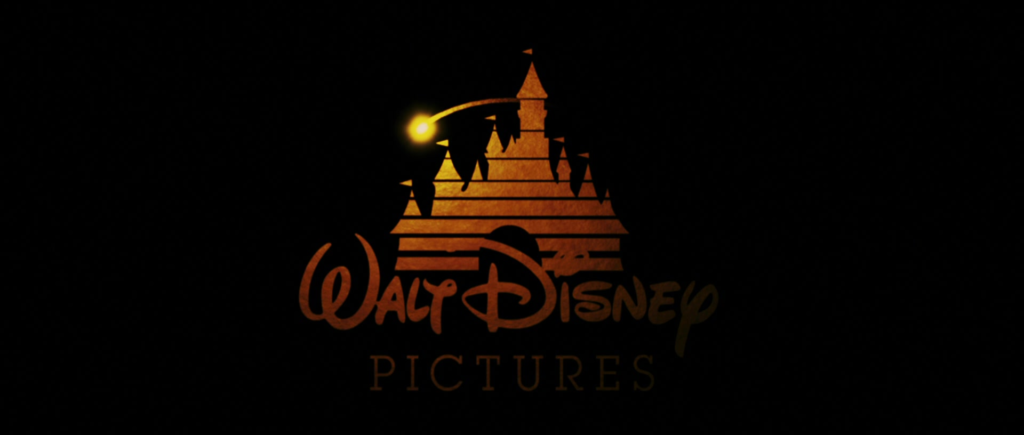
We open in a misty night sky as ominous music plays.
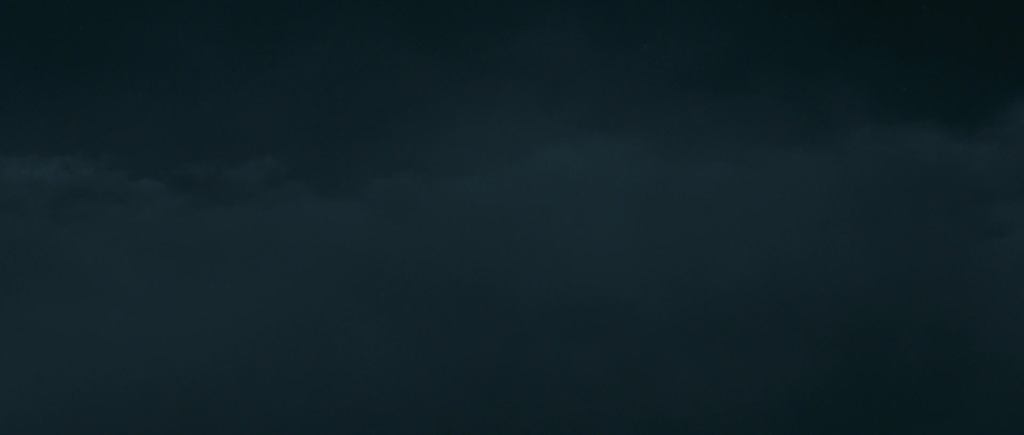
Then we get an even more ominous sight: German aircraft bombers circa 1940 cutting through the mist.
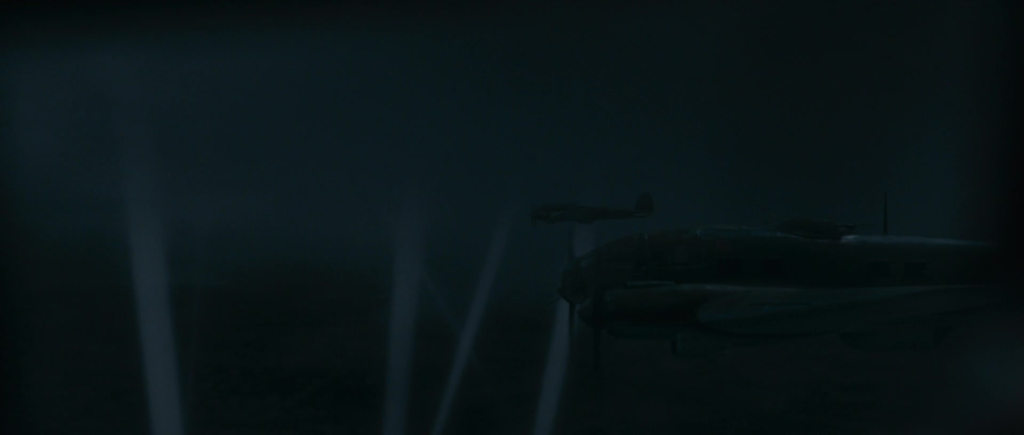
They drop bombs on the city of London below. We get our first look at one of our four main characters, a young boy called Edmund Pevensie (Skandar Keynes.)
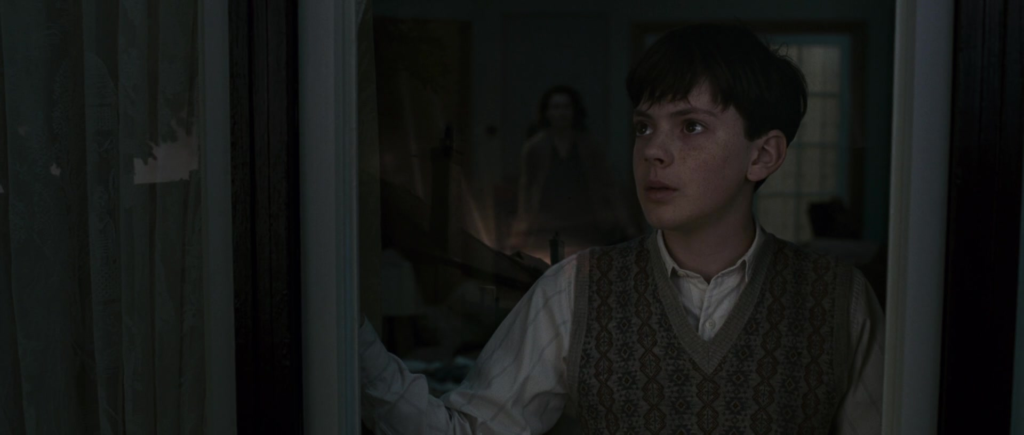
His terrified mother (Judy McIntosh) pulls him away from the window and calls to her oldest child, Peter (William Moseley), that they all have to get to the bomb shelter outside their house. The youngest child, Lucy (George Henley), is hiding under her bed covers and crying for her mother. Susan (Anna Popplewell), the second oldest sibling, runs into the room, looking for essentials to save. When she notices Lucy, she angrily grabs her and drags her out.
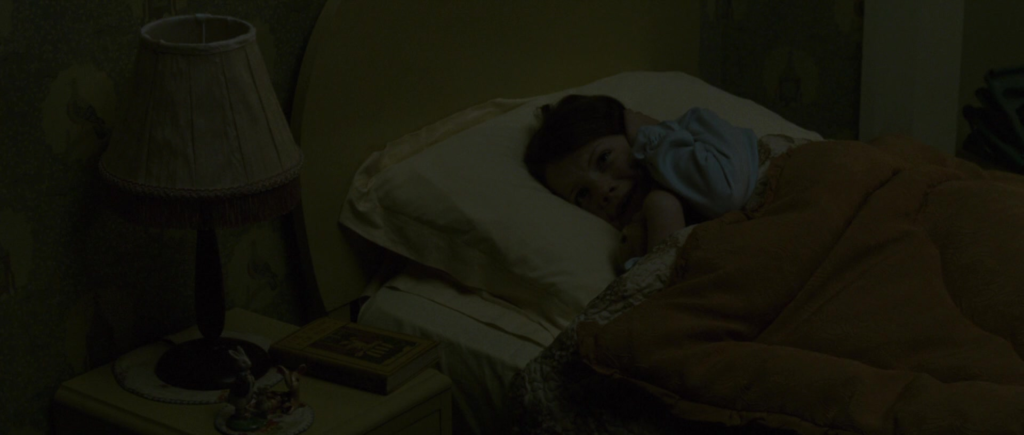
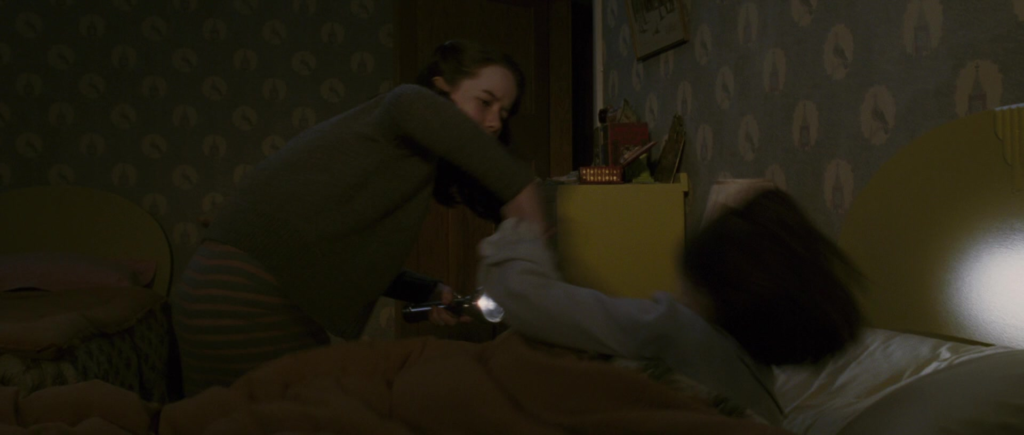
Eventually these characters will be dubbed Susan the Gentle and Lucy the Valiant, so I like to imagine the director, Andrew Adamson, wanted to introduce them when they’re behaving, respectively, ungently and unvaliantly[1]Not that I blame either girl under the circumstances. as a demonstration of how far they have to go. But maybe that’s reading too much into this. Anyway, the Pevensies race outside to the shelter as bombs rain down on their neighborhood. Suddenly, Edmund says, “wait! Dad!” and runs back into the house to his mother’s consternation. To her further consternation, Peter goes after him. You may think Edmund’s actions seem pretty reasonable if someone has been left behind in the house, but it turns out it’s not their actual father Edmund is going after but a photo of a man in an RAF uniform, possibly the only thing this family will have to left to remember their patriarch before long.
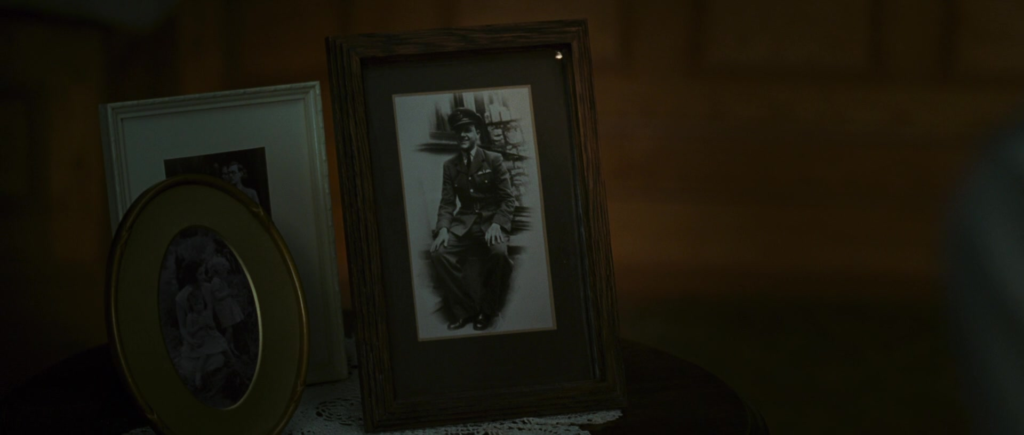
Peter pulls Edmund to the floor just in time to protect him from a bomb landing across the street.
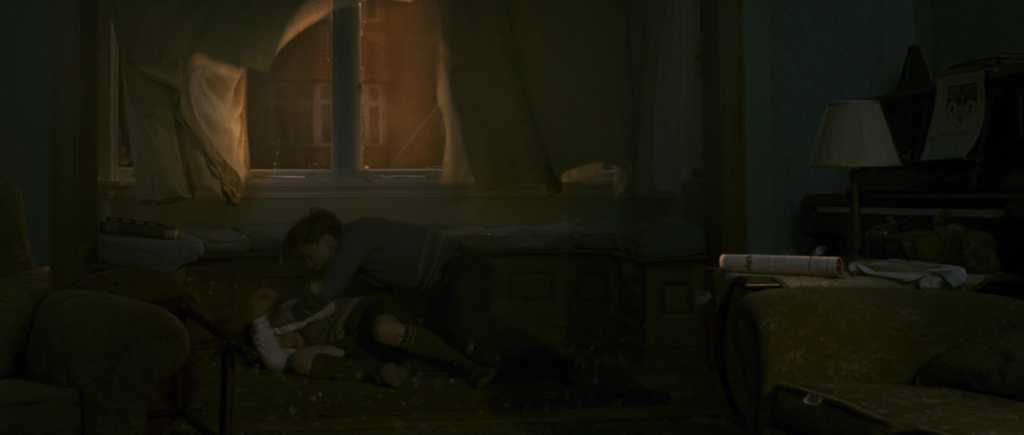
The picture frame is shattered but Edmund is able to grab the picture itself before Peter drags him to the shelter, throws him on the floor and royally chews him out for his recklessness. We’ll soon see that Edmund is normally quite argumentative and snarky, but in this scene he’s too devastated to respond. “Why can’t you just do as your told?” Peter concludes before slamming the door and ending the scene.
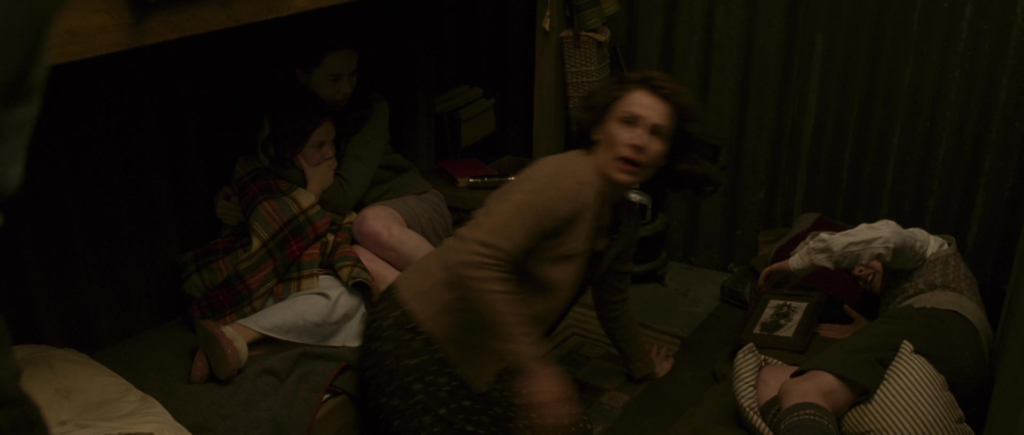
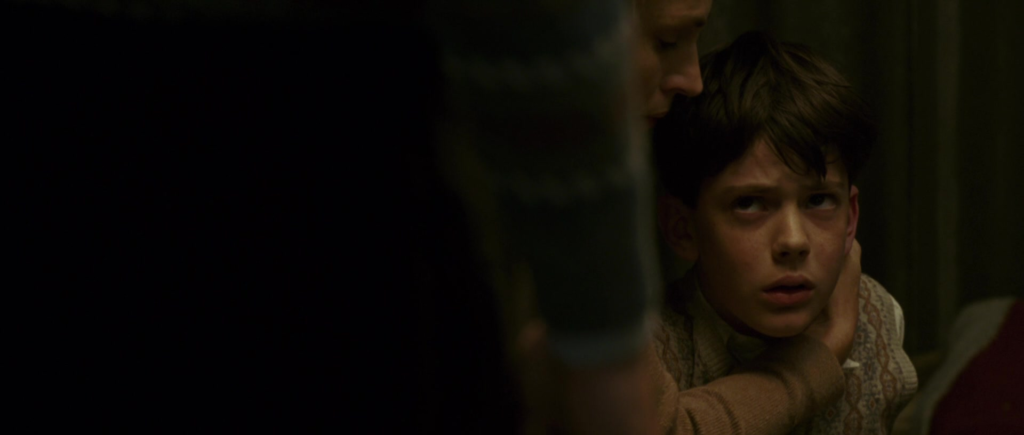
I know that as a fan of the book, I’m supposed to dislike this opening since air raids are only mentioned in one sentence there, though they do set the plot in motion. It’s easy to be cynical and say the filmmakers only created this scene because they wanted there to be more action in the story and the first third or so of the book is particularly lacking in that. But when I actually watch the movie, I can’t care. It’s a gripping beginning that gets me invested in these characters right off the bat.
The next scene, which is much calmer, shows Paddington Station full of young evacuees about to be sent from London, bidding farewell to their parents. Among them, of course, are the four Pevensies.
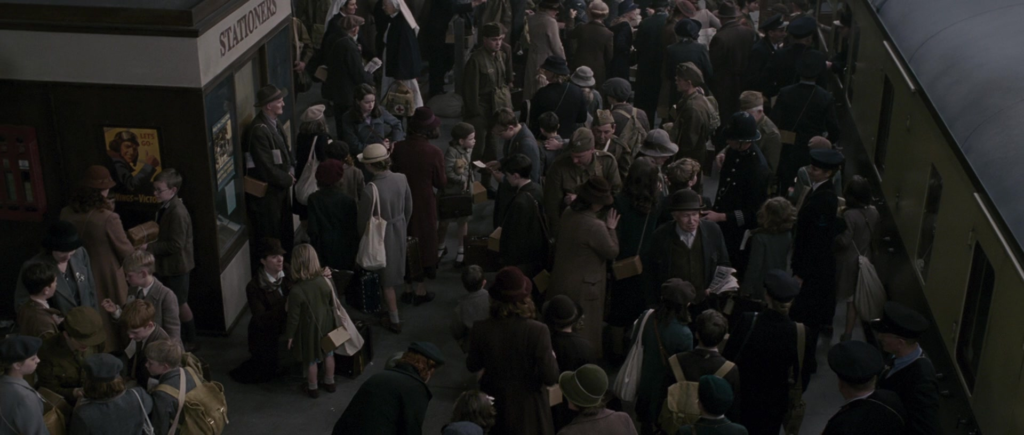
Edmund resents having to leave and is sulking, even going so far as to tell his mother, “Dad wouldn’t make us go.”[2]The 1988 miniseries of The Lion, the Witch and the Wardrobe also portrayed Edmund as being annoyed over having to leave London and, in another similarity, also portrayed Lucy as reluctant to leave … Continue reading “You will listen to your brother, won’t you?” she says. Edmund doesn’t answer but his frown tells us everything we need to know. This establishes Edmund’s main flaw, his resistance to authority. He’s so resentful about this he even resists his poor mother’s attempt to kiss him goodbye.
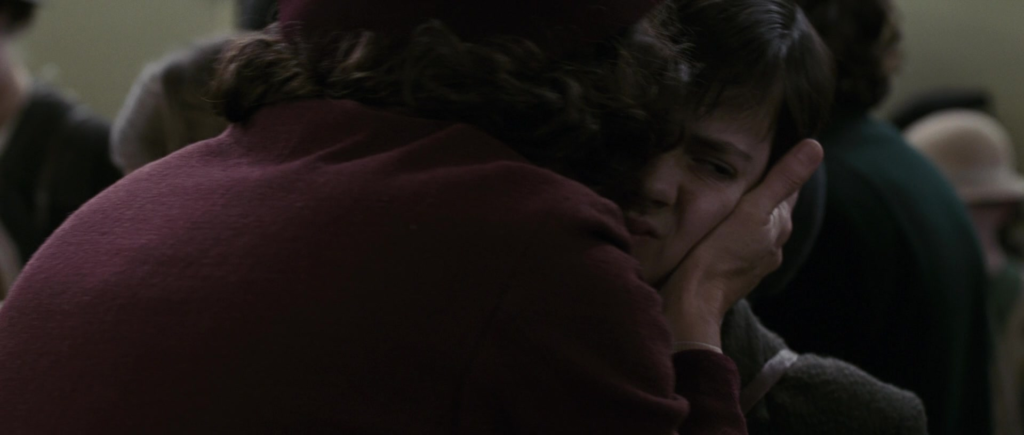
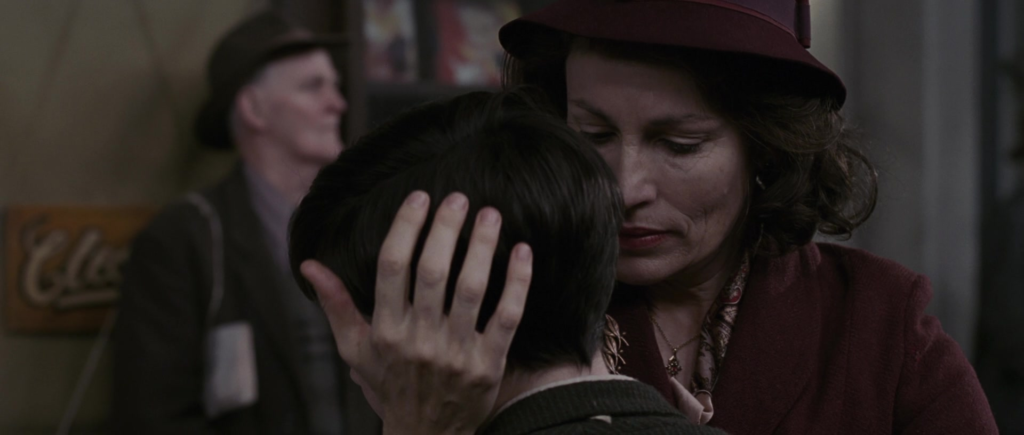
She gives each of her children a last hug. When it’s Peter’s turn, she says to him, “promise me you’ll look after the others.” “I will, Mum,” he replies tearfully. I know as a fan of the book I should disapprove of all this. On paper, I find the scene pretentious, serving mainly to show off how much research the filmmakers did on the time period, and needlessly sappy. The circumstances of the children’s evacuation don’t really connect to the main plot, and we never learn in this movie what happens to their parents, so it doesn’t really go anywhere.[3]By the way, it’s unlikely their father was a soldier in the book. In The Voyage of the Dawn Treader, which apparently takes place a matter of years after The Lion, the Witch and the Wardrobe, … Continue reading But in practice, I love it. The musical score by Harry Gregson-Williams beautifully sells the emotion and all five actors give great performances. I especially love how Anna Popplewell’s Susan quickly hides her sadness behind a forced smile when her mother addresses her.

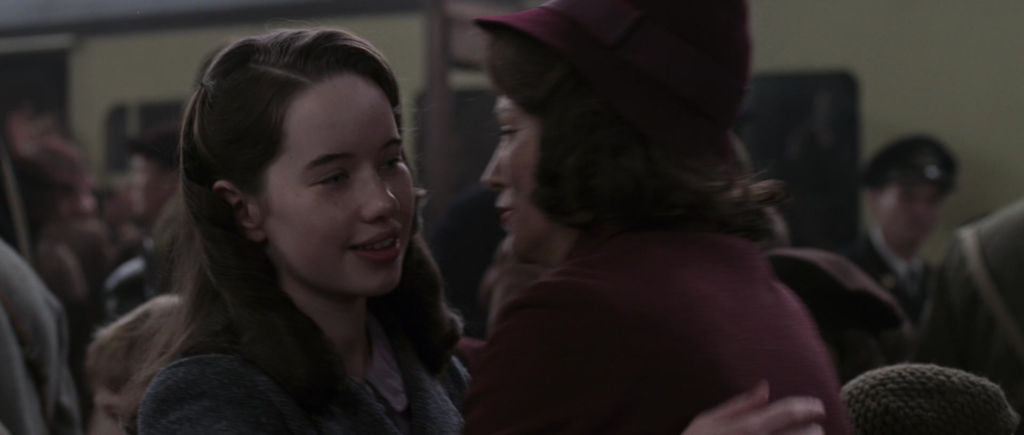
Judy McIntosh may only have two scenes in this movie, but does she ever make the most of them, helped no doubt by the makeup artists who make her look like she’s been crying regularly.
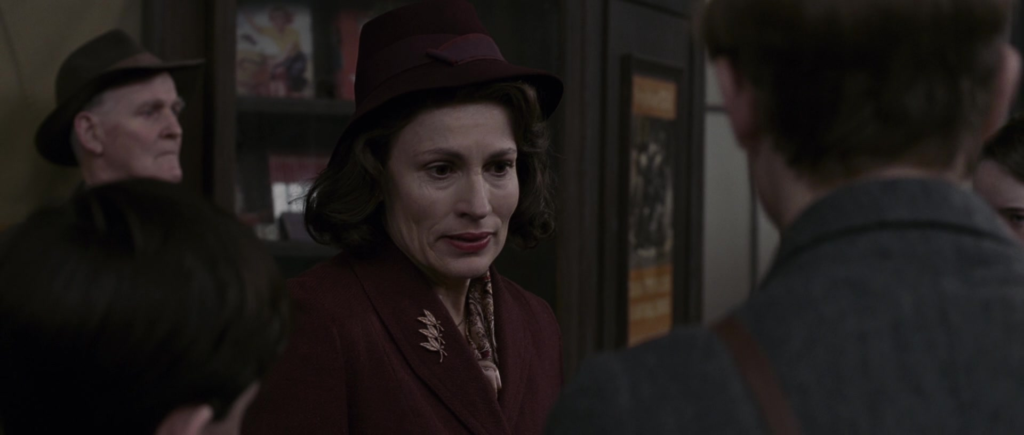
As the children get prepare to get on the train, Edmund again establishes his main flaw by angrily telling Susan (I think) that he doesn’t need her help and Peter comforts Lucy as she briefly breaks down crying, telling her, “We have to stick together now,” stating the theme of the adaptation. Clearly, subtlety is not going to be a major strength of this movie, but the unsubtlety works here. At the point when Peter is supposed to hand their tickets to the ticket taker, he is distracted by the sight of a young soldier, likely imagining what it must be like to be him. The more practical Susan has to snap him out of his reverie and grab the tickets from him. Interestingly, there was apparently no mention of the soldier in the screenplay where Peter simply fumbled with the papers like an incompetent and Susan rolled her eyes when she took them. Kudos to director Adamson for coming up with a way to make both characters more sympathetic than they were going to be.
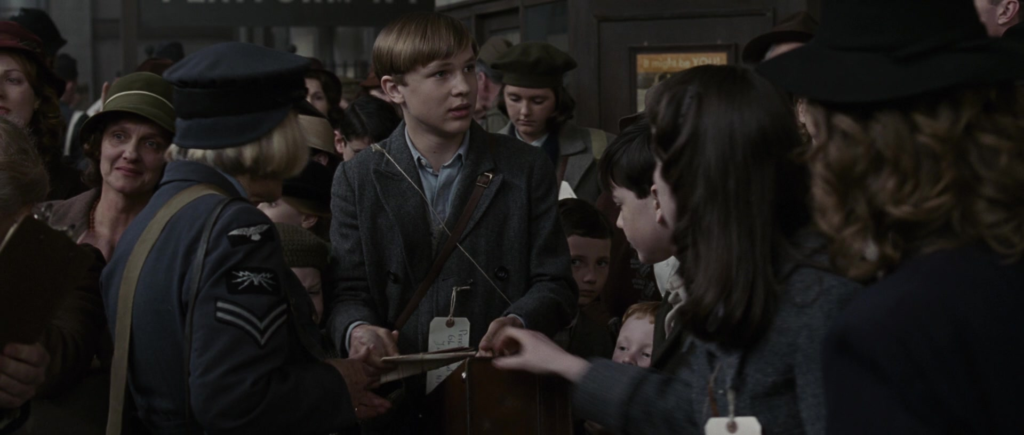
As the train departs, children lean out the window to wave goodbye to their mothers, including our principals of course. At first, it looks like Edmund is the only one not doing so, further establishing him as the family’s black sheep. But then we see he actually is waving or at least looking back, but that he was tragically blocked from his mother’s view, indicating he’s not quite as bad as he might be and that the movie is capable of being subtle once in a while.
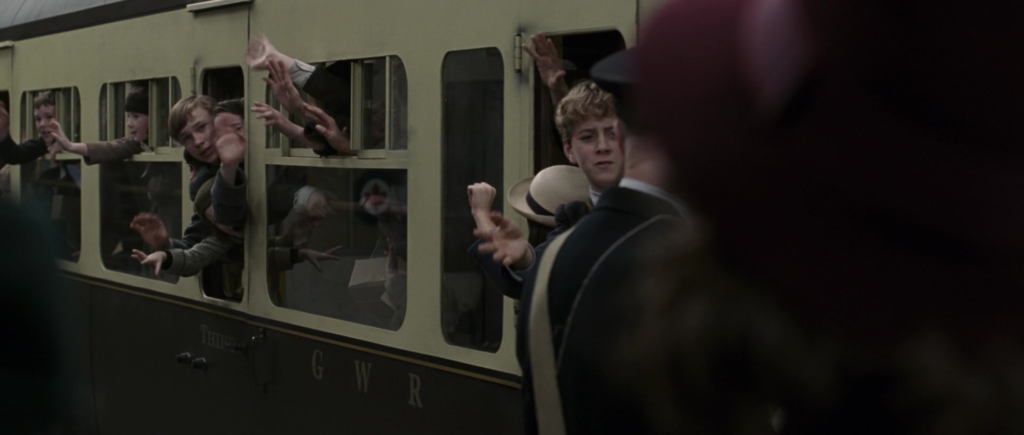
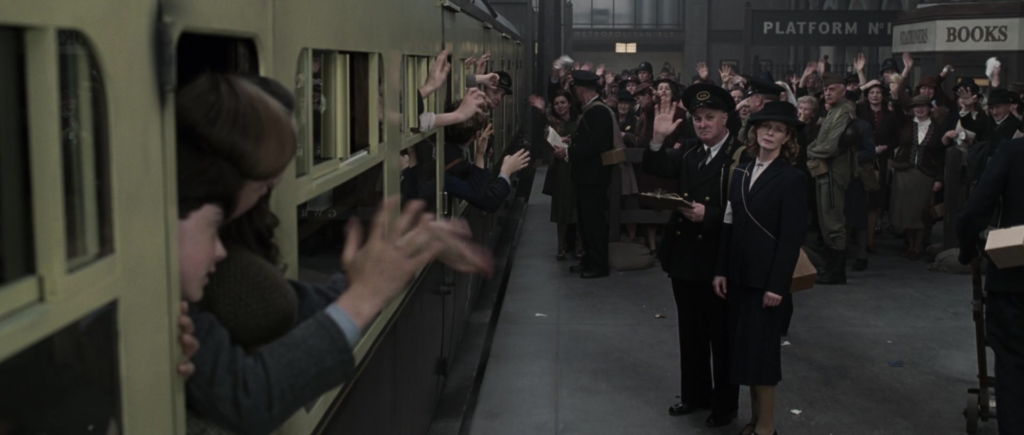
We then get a beautiful opening credits montage. The contrasts between the grays of the London station and the lush greens of the countryside through which the trains travels foreshadow the transformation from winter to spring that we will see the land of Narnia undergo.
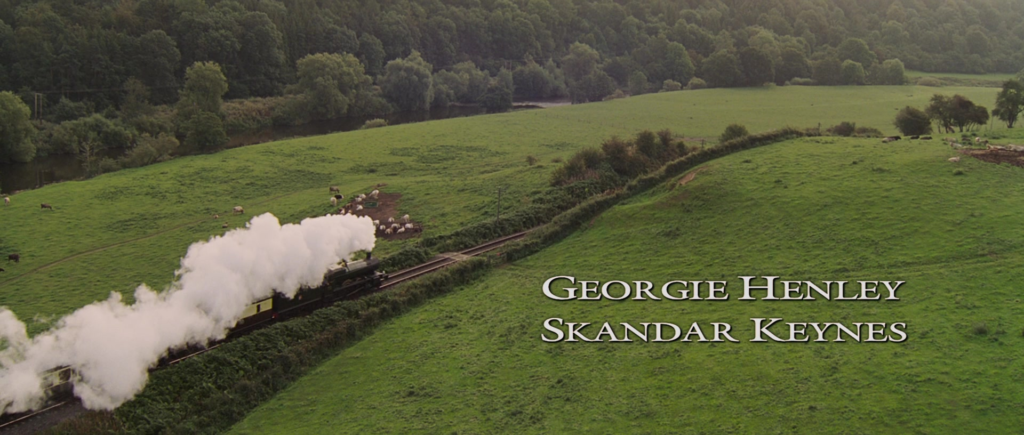
This montage also establishes suspense as the Pevensies witness two other young evacuees get picked up at a trains station by a rather grim unfriendly looking woman.[4]Cassie Cook who plays the girl is actually the daughter of Sophie Cook who played Susan in the aforementioned miniseries.
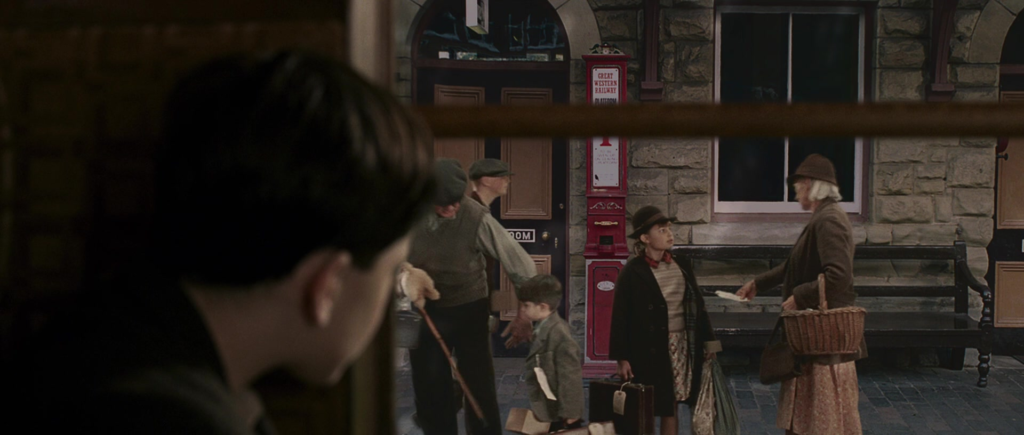
Our heroes are dropped off at a country station. (According to the book, the house where they’ll be staying is “ten miles from the nearest railway station and two miles from
the nearest post office.”) They hear an automobile coming and scramble to meet it but it honks its horn and drives past them. For a moment, they worry they’ve been sent to the wrong place but then a stern looking middle aged woman (Elizabeth Hawthorne) drives up in a horse and buggy. “Mrs. Macready?” asks Peter. “I’m afraid so,” she says.
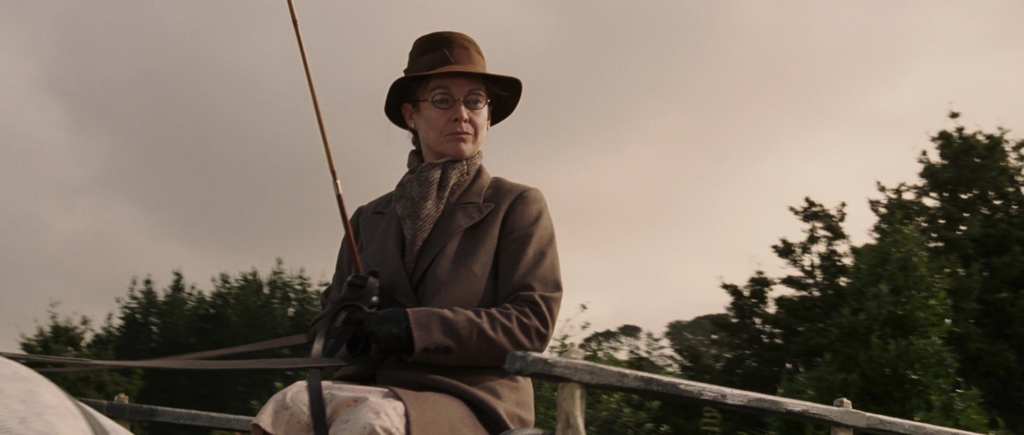
Here’s something I love about the movie. Every actor is great or at least good in their role including the very minor ones. Elizabeth Hawthorne only has a handful of scenes as Mrs. Macready the housekeeper of the children’s host, maybe less, but she packs so much personality into her every line that she’s a joy to watch.
Another thing I love about is the movie’s production design by Roger Ford and its general art direction. The house of Prof. Kirke, which the book describes in some detail, looks exactly the way it should.
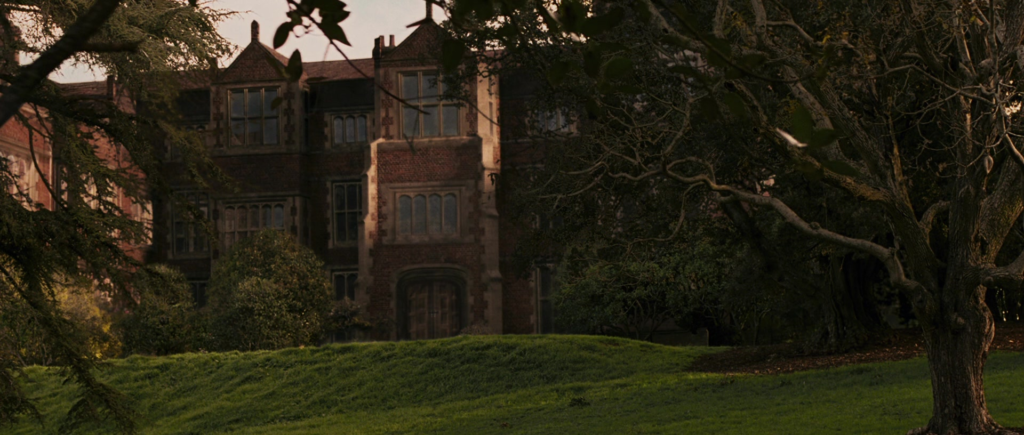
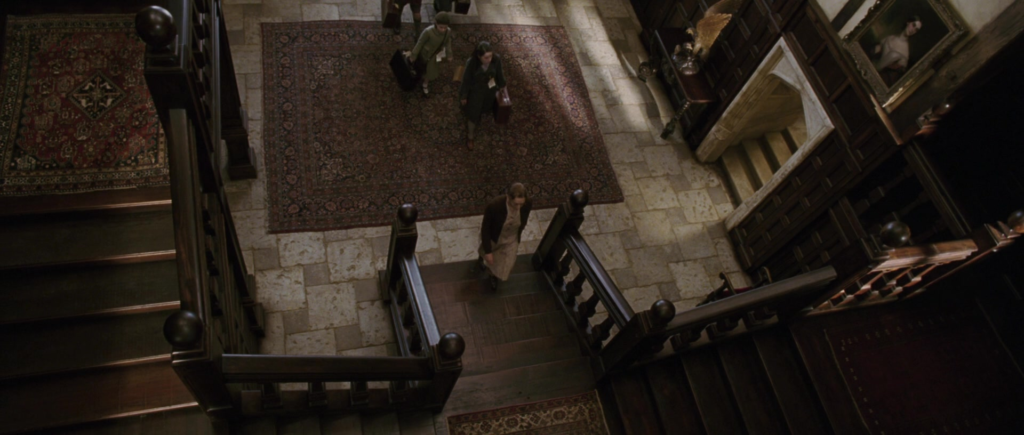
The few things we learn about Mrs. Macready from the book are that she wasn’t fond of children, she loved giving tours of this fancy house and when the Pevensies first arrived, she gave them a long list of instructions.[5]The book also offhandedly mentions that there also three maids, Ivy, Margaret and Betty, working for the professor. As a fan, I would have loved to have seen them get cameos, but I understand why … Continue reading The movie doesn’t fit in the part about tours, but it does include the instructions. Her outraged response to Susan almost touching one of the professor’s “historical artifacts” is hilarious. It’s not quite hammy, which is good since it wouldn’t fit in with the rest of the acting in the film if it were, but it’s in that neighborhood.
Both the book and the movie build intrigue about the character of the professor at this point but in different ways. In the book, he greets the children and has supper with them, but this is not depicted in detail, and he’s described as “so odd looking that Lucy…was a little afraid of him and Edmund…wanted to laugh and had to keep on pretending he was blowing his nose to hide it.” In the movie, we don’t see the professor at all, and Mrs. Macready ominously instructs the Pevensies that “there will be no disturbing” of him, but Lucy hears his footsteps from behind a door and sees the shadows of his legs. She quickly hightails it out of there.
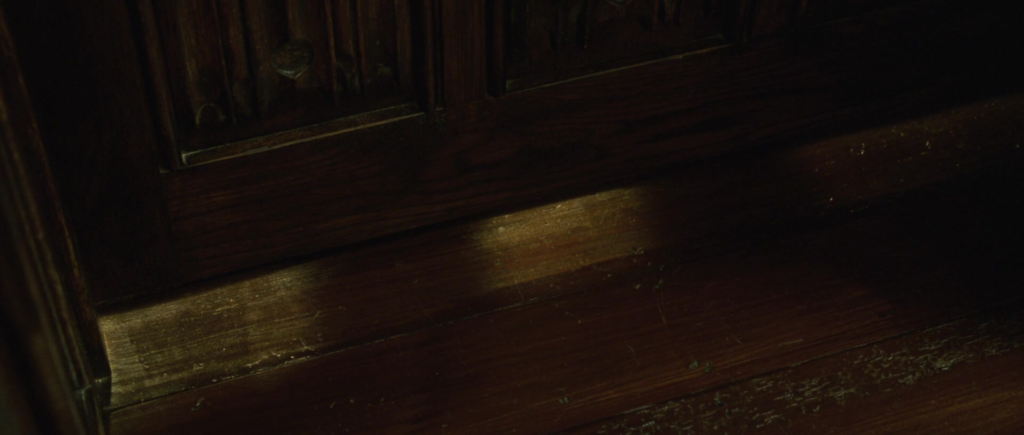
That night, Peter stares sadly out Lucy’s bedroom window while listening to a news report about air raids.[6]The radio announcer, by the way, is voiced by Douglas Gresham, one of the film’s producers and the head of C. S. Lewis’s literary estate. Susan walks briskly over and turns off the radio. Then the two oldest siblings turn their attention to the Lucy who is clearly upset over what she’s heard, though she claims the only things bothering her are scratchy bedsheets.
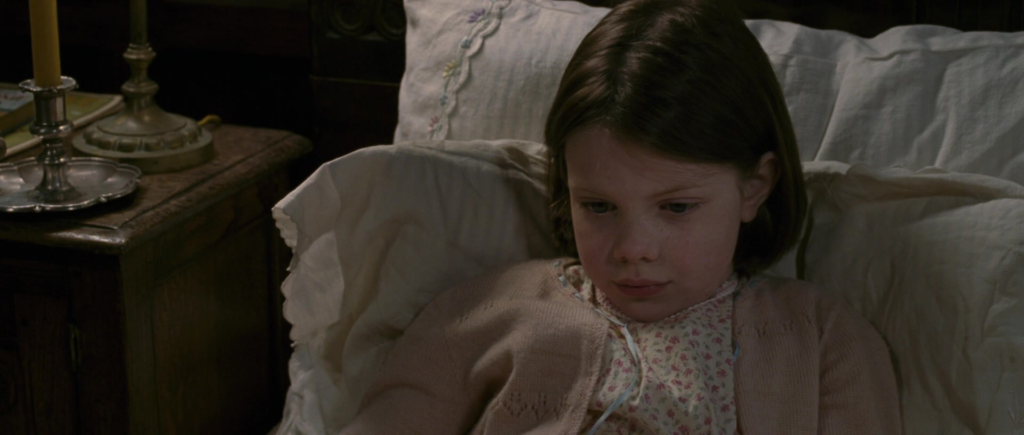
Then we get this dialogue.
Susan: Wars don’t last forever, Lucy. We’ll be home soon.
Edmund: Yeah, if home’s still there.
Susan: Isn’t it time you were in bed?
Edmund: Yes, Mum.
Peter: Ed! (to Lucy) You saw outside. This place is huge! We can do whatever we want here. Tomorrow’s going to be great. I promise.
Now in the book, Peter and the others are genuinely excited about exploring the professor’s vast country estate.[7]Though Lucy was portrayed as being creeped out by the big house and Edmund “was tired and pretending not to be tired and that always made him bad-tempered. Here they seem mainly scared about losing their home and their parents and unsure of themselves in a new environment. Presumably, the screenwriters, Ann Peacock, Christopher Marckus, Stephen McFeely and Andrew Adamson, felt this was more believable.[8]For what its worth, Peter’s first line in the book is “we’ve fallen on our feet,” which implies the characters were worried about falling on their butts before they met the … Continue reading Since C. S. Lewis was actually alive during World War II and actually had young evacuees staying in his house during the air raids, I’m inclined to think he would know better, however unbelievable his depiction of the Pevensies may seem to modern adult readers. That being said, it’s true that C. S. Lewis was not actually a kid during World War II and it’s likely the kids boarding with him had things going on in their heads about which he had no idea.
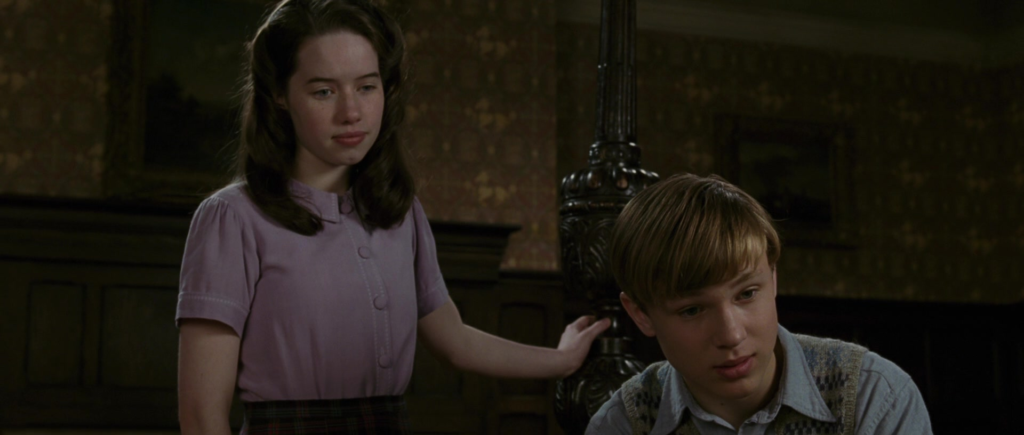
There’s a larger point to be noted here since it’s at this point that movie catches up with the book, the conversation between the Pevensies on the night they arrive being the first fully described scene there. While it takes liberties with the details, the movie stays quite true to the overarching plot of the book[9]It’s the only Narnia movie to retain its source’s structure. I kind of hate that that’s an accomplishment. and, for the most part, it stays true to the characters’ personalities too. However, it uses very little of the book’s dialogue.[10]Though Susan telling Edmund to go to bed and him accusing her of playing mother is from the source material. The film was right to keep that since it establishes their characters very well. In this way, it makes for an interesting foil to the 2003 Peter Pan movie directed by P. J. Hogan, another family action movie from the 2000s adapted from a classic children’s fantasy by a British author.[11]Though those who haven’t read either should know that there are also big differences between Peter Pan and The Lion, the Witch and the Wardrobe. The former is much more morally ambiguous than … Continue reading That adaptation made far crazier changes to the plot and characters than this one and arguably put more of its own spin on the message.[12]Well, you could argue the 2005 Lion, the Witch and the Wardrobe highjacks to story to deliver its own message too to an extent, but it’s less noticeable. But it also included plenty of dialogue from the source material and even when it was doing its own thing, you could tell the screenwriters were trying to channel the spirit of J. M. Barrie. The screenwriters for the first Narnia movie seem to have really liked the original book’s story but had no particular respect for or interest in C. S. Lewis’s writing style.
This makes me hesitate to recommend the movie as an introduction to the book, but it doesn’t ruin it for me, mainly because there had been two radio dramas, a miniseries, and a made-for-television animated movie adapted from the material prior to this, and they all tried to use the original dialogue. By 2005, I was interested to see a different version. It made for an interesting experiment to see how the story held up without Lewis’s amazing writing. Actually, I have to rephrase that. While I love the writing in The Lion, the Witch and the Wardrobe, the book, it’s more because of the descriptions than the dialogue, at least when it comes to the protagonists. (When I get to the characters of the beavers and Aslan, I’m going to take more issues with the script adaptation.) I’d still say the conversations in the literary version were better written than the ones in the cinematic one, but I don’t think changing them destroys the whole appeal of the original.
There’s something else I should admit here. The Lion, the Witch and the Wardrobe is not my favorite Narnia book. I love it just as I love all the Narnia books, but in a personal ranking, I’d rank it with Prince Caspian, which many people consider the weakest of the lot. I’m probably a little more openminded about aspects of this adaptation than someone for whom The Lion, the Witch and the Wardrobe is the best or the only good Narnia book. Had the series gotten around to adapting my personal favorites, The Horse and his Boy and The Magician’s Nephew, I’d likely be a lot harder on them.
Next Week: Lucy Looks Into a Wardrobe
References
| ↑1 | Not that I blame either girl under the circumstances. |
|---|---|
| ↑2 | The 1988 miniseries of The Lion, the Witch and the Wardrobe also portrayed Edmund as being annoyed over having to leave London and, in another similarity, also portrayed Lucy as reluctant to leave her mother behind. |
| ↑3 | By the way, it’s unlikely their father was a soldier in the book. In The Voyage of the Dawn Treader, which apparently takes place a matter of years after The Lion, the Witch and the Wardrobe, we’re told he goes on a lecturing tour in America. |
| ↑4 | Cassie Cook who plays the girl is actually the daughter of Sophie Cook who played Susan in the aforementioned miniseries. |
| ↑5 | The book also offhandedly mentions that there also three maids, Ivy, Margaret and Betty, working for the professor. As a fan, I would have loved to have seen them get cameos, but I understand why they didn’t. |
| ↑6 | The radio announcer, by the way, is voiced by Douglas Gresham, one of the film’s producers and the head of C. S. Lewis’s literary estate. |
| ↑7 | Though Lucy was portrayed as being creeped out by the big house and Edmund “was tired and pretending not to be tired and that always made him bad-tempered. |
| ↑8 | For what its worth, Peter’s first line in the book is “we’ve fallen on our feet,” which implies the characters were worried about falling on their butts before they met the professor and saw his house. |
| ↑9 | It’s the only Narnia movie to retain its source’s structure. I kind of hate that that’s an accomplishment. |
| ↑10 | Though Susan telling Edmund to go to bed and him accusing her of playing mother is from the source material. The film was right to keep that since it establishes their characters very well. |
| ↑11 | Though those who haven’t read either should know that there are also big differences between Peter Pan and The Lion, the Witch and the Wardrobe. The former is much more morally ambiguous than the latter and contains strong elements of affectionate parody. |
| ↑12 | Well, you could argue the 2005 Lion, the Witch and the Wardrobe highjacks to story to deliver its own message too to an extent, but it’s less noticeable. |
